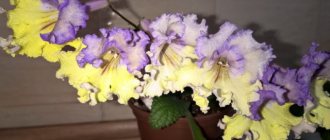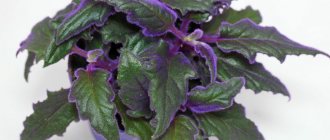general description
In appearance, this deciduous shrub resembles periwinkle, but it does not belong to this family. For a long time, specialists - botanists also thought so. But after careful research, the plant was separated into a separate catharanthus family. Lovers of the flower more often call it pink periwinkle or vinca. It is often called periwinkle because of the perennial's resemblance to the classic periwinkle. This genus has only eight species. But only one is grown in flower beds, namely rose catharanthus. Recently, the variety of catharanthus ampelous has become more widespread.
The homeland of the pink periwinkle is not precisely determined due to its wide distribution. It grows in the subtropics and tropics of Africa, Indonesia and many other parts of the planet. In warm areas, pink periwinkle is considered a perennial garden ornament, while in northern areas it is considered an annual or indoor plant.
This tropical flower is an evergreen subshrub, reaching a height of just over half a meter. Its stems are erect and strongly branched in the upper part. In ampelous forms, the stems are longer and droop. That’s why the wine is usually hung on the window. The stems have very bright flowers and, in combination with hanging green leaves, look quite impressive. Its leaves are sessile and arranged oppositely. The shape is oblong, lanceolate and has a smooth edge. The color of the leaves is bright, dark green. Their length is no more than seven centimeters.
The flowers of the plant are quite large, approximately 3 cm in diameter, and are similar to the flowers of phlox or balsam, but unlike phlox, they are not collected in inflorescences. It blooms from approximately the beginning of May to the end of November. Flowers have no smell. They come in pink, white or purple shades with a yellow or crimson center. The fruit is bileaf.
Catharanthus is poisonous, and all its parts are poisonous. Therefore, such a plant should not be grown in a room where there are animals or small children.
https://youtu.be/F-PA94oysd0
Luxurious indoor periwinkle with pink flowers
Known to gardeners as pink periwinkle, catharanthus really resembles the most unpretentious representative of garden ground covers. Especially the shape of the flowers and the amazing dense glossy foliage. But catharanthus blooms much more abundantly than garden periwinkle, and the color scheme is radically different.
Catharanthus are showy, bushy plants. Catharanthus are not only indoor plants. They are grown both as garden summer flowers and as balcony flowers. And no matter what conditions the pink periwinkle is grown in, it always surprises with its amazing cuteness and cheerfulness.
There are not many species in the genus Catharanthus (7-8 in total), but only one plant is used in decorative floriculture and landscape design - catharanthus roseus. This is an evergreen subshrub up to 40-50 cm high. Straight but densely branching shoots form spectacular bushes, the crown seems lush and very dense.
The greenery of the catharanthus, although simple, is very beautiful. Dark, glossy, bright, with a beautiful midrib, lanceolate-oval leaves are pointed at both ends and seem very cute. And what a luxurious background they create for the flowers! Similar in shape and structure to periwinkle flowers, in catharanthus they consist of 5 lobes with a small but brightly contrasting eye in the center. The colors of catharanthus are always bright, acrylic, flashy. The purest tones of pink, orange, white and fuchsia give the plant a cheerful appearance.
Catharanthus blooms tirelessly from May to October. It seems to strive to cover all the warmest and sunniest months, going into the shadows only on the eve of the first serious cold weather. But this duration has its downside: after the enchanting show, the catharanthus is depleted and it will be very difficult to make it bloom again.
That is why the plant is most often considered as an annual plant, replaced with new specimens after flowering. After all, fiddling with temperatures, care, and stimulating flowering is much more difficult than the process of rooting cuttings. New catharanthus can be purchased annually, having been forced and treated with inhibitors that inhibit the growth of plant shoots. Or grow new specimens yourself, especially since catharanthus is very easy to take cuttings.
Catharanthus roseus, better known in gardening as pink periwinkle (Vinca rosea). ymkerVarieties
All varieties of the current catharanthus belong to interspecific hybrids that were bred by breeders. These are compact plants with flowers of various shades.
- Pacific differs in that it blooms earlier than other varieties. This variety is one of the most unpretentious to the conditions; in warm areas it is suitable for growing in open ground, and in the northern regions it is grown as an indoor crop.
- Cooler is a shrub up to forty centimeters in height. The bush is lush, highly branched with large flowers of a bright shade and even brighter hearts in the center of the flower.
- First Kiss is considered the most common variety and the most titled. It is distinguished not only by its compact size, but also by the variety of shades of large colors.
- The cascade belongs to the ampel type, the height of which is no more than 15 cm with flexible ones hanging from the flower pots.
Growing
From seeds
Sowing is carried out at the end of February or beginning of March.:
- A special drainage layer of 3-5 centimeters is placed in the container for seedlings.
- Seeds are sown to a depth of 2 centimeters.
- After planting, the crop is covered with film or glass.
- Complete darkness is necessary for seed germination.
- The optimal temperature is 24 degrees.
- The greenhouse needs constant ventilation and regular moistening.
- After a week, the first shoots will appear.
- After germination of the seed, the box is placed in a lighted place.
- After 14-15 days, mineral fertilizing is carried out.
- Picking occurs when the seedlings have formed 4 full leaves.
We talked in more detail about the rules for growing catharanthus from seeds here.
From cuttings
The procedure is done in the first month of spring:
- The tops of cuttings 6-7 centimeters long are cut obliquely.
- Apical cuttings are treated with Kornevin for rapid rooting.
- Next, the cuttings are placed in water or clean coarse sand.
- Then the seedlings are covered with glass.
- To form a beautiful bush and to obtain lush and generous flowering, it is recommended to pinch the tops of the seedlings 2 times.
- When the seedlings take root, they are planted in special peat cups and planted in open ground (we talked more about planting catharanthus in open ground here). Seedlings are planted at a distance of 30-40 centimeters. Perlite and river sand are added to the soil for cuttings in equal proportions.
By division
Ampel varieties of catharanthus are also propagated by division during transplantation . The procedure is simple, performed in the spring, in April:
- The mother bush is divided into parts with roots - layering without damage.
- The cut areas are treated with charcoal.
- Each part is planted in a separate spacious, deep pot.
Medicinal properties
In India and on the island of Madagascar, healers used catharanthus to lower blood sugar, as well as to treat coughs and various tumors. Catharanthus contains alkaloids that have antitumor effects. Medicines are made from the plant, for example, vincristine and others. Treatment with such medications, produced at pharmacological enterprises or at home, must be carried out in accordance with the strict advice of a doctor. Constant medical supervision is also necessary due to its toxicity and many side effects.
Planting catharanthus in a pot
The roots of the plant can grow up to 35 cm during the season. To plant an indoor catharanthus flower in a pot, you need to:
- Place a drainage layer up to 4 cm thick at the bottom of the selected container. This can be pebbles, expanded clay or any other small stones.
- The pot is half filled with the prepared soil mixture.
- The flower seedling is placed in the center of the container and sprinkled with the remaining soil on top.
- Planting catharanthus ends with watering.
Catharanthus pot
If this plant is immediately planted in a small container, then soon its fast-growing roots will fill the entire volume of the pot and begin to climb out through the drainage holes, closing them. The catharanthus flower, which will be grown at home, must be immediately planted in a large pot. Then it will develop well and bloom beautifully throughout the summer season.
Soil for catharanthus
This plant loves nutritious, loose soil. To plant a homemade catharanthus flower, the easiest way is to buy soil in the store. For example, geranium soil is suitable for this. Some gardeners prepare the soil for planting themselves: they take equal amounts of humus, leaf soil, fine river sand and peat. Having mixed all the ingredients well, the soil is poured into the prepared container.
Features of care
The plant is quite unpretentious, but for good development and vigorous flowering, it requires constant care.
Temperature
Indoors it should not go beyond 15C-30C and it is unacceptable for it to fall below 8C, since the flower is a plant of tropical regions. In the warm season, gardeners recommend moving indoor plants to the terrace or balcony. If a flower is grown in a private house, it is taken out into the yard. This is done so that it “breathes”.
If you want to plant a flower in the garden, you must first accustom it to bright light. Choose a quiet place for planting, where it will be protected from cold, wind and drafts that can destroy such a beautiful plant.
Pink periwinkle is unlikely to survive winter outside. For this reason, before the cold weather, you need to cut branches for cuttings, plant them for rooting and store them in the house throughout the cold season.
Lighting
If the flower is grown in a room, it is usually placed on the windowsill of western or eastern windows. Catharanthus ampelous likes good lighting, but there should not be a lot of falling rays of the sun. If there is a lack of light, the stems of the vine grow in length, become thin, and flowering becomes poorer.
Watering and humidity
Vinca is a moisture-loving plant. It needs abundant watering. The soil should always be moist. Drying out is unacceptable. But excessive humidity also harms the plant. There should be no stagnation of water to prevent the roots from rotting.
The plant also likes spraying every day. The water should be at room temperature, but you can also place the flower pot in a tray with expanded clay. This will help maintain humidity.
Fertilizer and preferred soil
Vinka needs feeding almost all year, almost every 14 days. To do this, use fertilizers that are offered for flowering indoor plants. Only the dose should be taken less than twice as much as the instructions indicate. Only in winter fertilizing is not needed.
Catharanthus grow very quickly and therefore require frequent transplants. In the summer, they are sometimes transferred to new pots. Frequent replanting allows plants to grow well and bloom luxuriantly. If its roots entwine the entire earthen lump in the pot, flowering stops, and the leaves begin to turn yellow and fall off.
Preparation
Before proceeding directly to planting seeds, it is necessary to carry out a number of preparatory procedures aimed at creating optimal conditions for the future growth of the plant. You cannot neglect them if you plan to grow healthy and beautiful flowers.
For this, one of the effective drugs is usually used.
- "Epin." This product is diluted at the rate of 3 drops per 100 ml of water. The seeds are moistened with the resulting mixture 3 hours before planting.
- "Zircon". This solution is made at the rate of 0.025 ml per 100 ml of water. The material for future planting is soaked in the resulting product for 4 hours before sowing.
- Succinic acid. It is necessary to soak the seeds in this composition for 12-24 hours. The solution is made in a ratio of 1 g per 1 liter of water.
Catharanthus seeds also require other preparatory procedures. Before planting, it is recommended to disinfect them from the appearance of insects and various dangerous parasites. To do this, make a weak solution of potassium permanganate. The seeds are kept in it for no more than 30 minutes. After this, they are transferred to a paper napkin or gauze so that they can dry completely.
It is very important to correctly select and prepare containers for planting, as well as high-quality soil. To plant catharanthus, it is recommended to ensure that the soil is:
- loose and airy;
- fertile;
- moisture permeable;
- with an acidity level in the range of 5.5-5.9 pH;
- with moderate salt concentration.
If you prepare the soil on your own, you will need to combine leaf and turf soil in equal proportions. You will also need to add coarse river sand and a small portion of peat to them. All components are disinfected in advance by heating in the oven, or by treating with specialized mixtures such as potassium permanganate. This will prevent the development of various diseases and the appearance of dangerous parasites. To make the soil looser, it is advisable to use Perlite or Vermiculite.
Instead of a substrate, it is allowed to use peat tablets. There is no need to carry out crop picking. However, before you start directly planting the seeds, this tablet must be thoroughly moistened.
It is very important to choose a suitable container for the catharanthus. It should be quite large, since this crop develops at a very fast pace and is characterized by a powerful root system
Trimming
In spring, pink periwinkle shoots are cut back by about a third. This procedure allows not only to rejuvenate the plant, but also to create a compact bush. If the plant has become very elongated, it can be pruned again in the summer. Cut stems bloom in about a month.
Since the periwinkle bush grows indoors, it should not be grown for more than three years. After three years, it is completely renewed using cuttings. Young plants look more attractive than old ones. Catharanthus growing in a street flower garden also needs pruning. After all, the pruning process speeds up branching, and the bushiness of the vine increases the number of flowers.
As for the ampelous type of catharanthus, it is rarely pruned. You only need to cut off those branches that spoil the appearance, because the more they hang, the more beautiful the plant.
Gardeners who developed new varieties selected hybrids with maximum branching. It should be remembered that this plant is poisonous, so you need to wear gloves when cutting it.
Reviews from gardeners
Tanya, Samara
I have had catharanthus growing for several years. I sowed it with seeds and at first grew it as an indoor flower. There were a lot of shoots and there were no problems with it, except that it loves water very much, and in the summer I planted it in the garden.
Source: www.forumhouse.ru
Julia, Ramenskoye
Sowing is done in the spring, in February-March, in light sandy soil, having previously treated the seeds with a solution of potassium permanganate. Shoots appear in 7-10 days. Seedlings develop very quickly.
Source: forum-flower.ru
Reproduction
Seeds
Before sowing, seeds are treated with a weak solution of manganese: approximately 2 g per liter of water. Before disinfection, the seeds must be wrapped in gauze and immersed in a manganese solution for 30 minutes.
For the ampelous catharanthus plant, growing from seeds does not require special knowledge in breeding. Seeds are usually sown at the end of February or early spring. This is done in special boxes for seedlings at a depth of no more than 2 cm, in moist soil. After this, the boxes are covered with an opaque black film, for the reason that the seeds germinate in the dark.
New shoots sprout quickly, within about a week, and their appearance is very rapid if the air temperature in the room is not lower than 22C. After small plants germinate, they need to be taken out to a bright room and the temperature lowered by 2-3 degrees. A couple of weeks after this, fertilizers containing a little phosphorus in their composition are added to the boxes. When small seedlings produce 4 leaves, they need to be picked. If in the future the bushes will be grown in pots, it is better to plant them 2-3 in one. In this way, greater pomp and elegance will be achieved.
Disease Prevention
- Excess moisture causes rotting of roots and stems - late blight. Treatment with fungicides will help.
- Additional spraying with fungicides will help against powdery mildew.
- Gray rot - you need to adjust watering and air humidity, it is necessary to treat the bush with any antifungal agent.
- Mealybugs, aphids - a soap solution or treatment with karbofos or actar will help get rid of them.
Varieties of ampelous catharanthus are stable and unpretentious, do not require special care and attention. In recent decades, these tropical flowers have become very popular among gardeners and summer residents.
Pests and diseases
This plant is poisonous, so it is extremely rarely affected by pests. But still sometimes:
- Aphids or spider mites appear. Vinca and scale insects are also affected. If such pests appear on the plant, this means that the air in the room is too dry. To cure a bush, you need to remove pests, and then treat the plant with chemicals. Then you need to spray the plant more often.
- If the tips of the leaves turn yellow and die off, this also indicates a lack of atmospheric humidity.
- The most unpleasant among the diseases that affect shrubs is stolbur. It manifests itself in the fact that the leaves are covered with pale, yellowish spots. Unfortunately, this disease has no cure. In this case, the plant must only be destroyed.
- Yellowing and leaf dieback may also occur. This is a signal of “sun overdose”. In this case, the plant is shaded.
- The plant is sometimes susceptible to rust infection. It is possible to cure catharanthus from pale rust only with the help of fungicides containing dithiocarbamates.
- If flowering is rare, the temperature in the room should be increased, because this phenomenon means that the catharanthus is cold and needs to be warmed up.
Catharanthus species
All hybrids of this plant were created by breeders based on pink catharanthus, so they differ in the color of the flowers and the height of the bushes. Below are the popular varieties of catharanthus that are most loved by amateur flower growers:
- Aristocrat
. The maximum height of the bush is 0.5 m. Its large flowers are painted in different shades: from pure white to burgundy-red. In the center of each of them there is a peephole, the tone of which contrasts with the main one. - Pacifica
. A compact bush up to 30 cm high. Catharanthus blooms very early. A contrasting eye stands out against the background of bright petals. In varieties of this plant, flowers can be painted in the most original shades: white, wine, apricot, light pink. - Cooler
. The plant is low (about 40 cm). The flowers are large and have lavender, white, pink, and red tones. - First kiss
. An indoor flower no more than 40 cm high. Its crown is very impressive, and the flowers can have one of 13 colors. Plants of this variety are considered the most popular among flower growers around the world. They were highly appreciated at international competitions. - Cascade
. These are ampelous plants with flexible long stems that can creep along the ground or hang from flowerpots. Large flowers are painted in white, red, pink, cherry, and lilac shades. - Titan
. Another ampelous variety with vines up to 75 cm. Bright red, burgundy, lilac flowers will look great in a hanging pot.
Use in floriculture
You can grow catharanthus together with petunias on balconies. They are quite content with a small portion of the morning sun, provided they are regularly watered and fertilized. The plant is also used in decorative hanging pots outdoors in the summer; it can also be used as an effective ground cover crop. It grows quickly, takes up space on the ground and covers the soil with a dense cover. You can also use the plant for borders, along garden alleys, which are located in semi-shaded places.
What does a catharanthus flower look like?
This plant is common. The catharanthus flower, the description of which refers it to the Kutrov family, in nature grows up to 1.5 m. At home, the bushes are not taller than 0.6 m. Their dense shoots are decorated with shiny dark green leaves. A white vein runs through the center of each of them. Catharanthus flowers have 5 petals and reach 5 cm in diameter. They cover the bush with a lush hat, and their shades can be very different: white and orange, pale lilac and purple.
Catharanthus flower in landscape design
Lush bushes with bright flowers will be a worthy decoration of any site. Designers often use it in their compositions:
- Due to its special attractiveness, this plant looks appropriate in rockeries and mixboards, in borders and borders.
- The erect catharanthus flower in the garden serves as a bright decoration of the flower bed.
- The ampelous perennial catharanthus flower can be grown on the balcony in a box or container.
- Catharanthus with long flowering vines look especially beautiful in vertical gardening. Such multi-colored pendants decorate the walls of buildings, lighting poles and other structures.
What colors does catharanthus go with?
Landscape designers love to use this flower in their work, because it goes well with other ornamental plants. Catharanthus grows quickly in the garden, so it is often used as a ground cover plant that forms a dense colored carpet. Beautiful floral compositions are created by catharanthus in a flowerbed with other flowers:
- balsam;
- petunias;
- marigolds;
- lobelia;
- periwinkle.











